CECAM Highlights
While we work and await happier days when it will again be possible to gather and make science standing in front of the same blackboard (notebook, whiteboard, computer screen…) we would like to propose a different way to keep in touch. In the weeks to come, we shall publish regularly on our website videos and documents from our archives. We hope that they will prove unobtrusive and interesting companions for our journey through these challenging times.
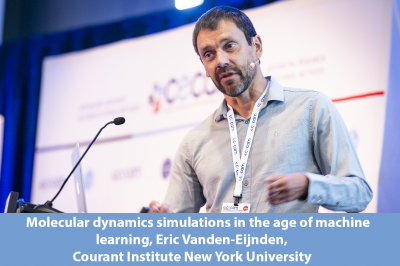
Molecular dynamics simulations in the age of machine learning
Eric Vanden-Eijnden, Courant Institute New York University
Plenary Lecture at “Molecular and materials simulation at the turn of the decade: Celebrating 50 years of CECAM”, Lausanne, Sept. 9-12 2019
Is there a connection between the Schrödinger equation, the curse of dimensionality, the game of GO, molecular dynamics and machine learning? Let’s explore this question in Prof. Vanden-Eijnden's lecture at the CECAM50 conference.
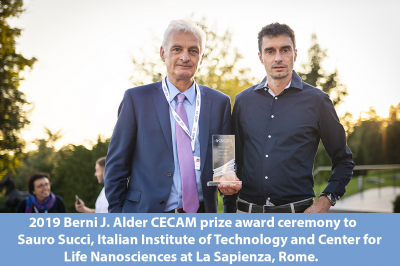
2019 Berni J. Alder CECAM prize ceremony
Awardee Sauro Succi, Italian Institute of Technology and Center for Life Nanosciences at La Sapienza, Rome.
Plenary Session at “Molecular and materials simulation at the turn of the decade: Celebrating 50 years of CECAM”, Lausanne, Sept. 9-12 2019
Join us for this important moment for the CECAM community, where key contributions to simulation and modelling are recognized. The 2019 award acknowledges the contribution of Sauro Succi in establishing Lattice-Boltzmann as an overarching framework for kinetic phenomena, employed by researchers in academia and industry.
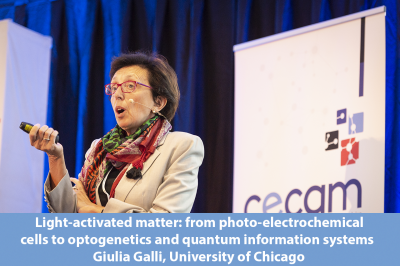
Light-activated matter: from photo-electrochemical cells to optogenetics and quantum information systems
Giulia Galli, University of Chicago
Plenary Lecture at “Molecular and materials simulation at the turn of the decade: Celebrating 50 years of CECAM”, Lausanne, Sept. 9-12 2019
Discover how first principles simulations can be used to advance research on sustainable materials, photoelectrochemical cells, optogenetic and quantum information.
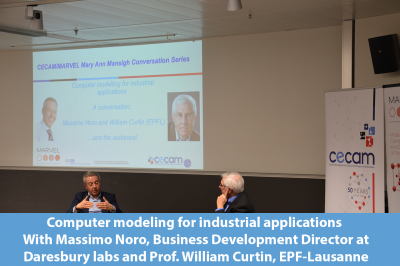
Computer modeling for industrial applications
Massimo Noro Daresbury labs, William Curtin EPF-Lausanne
How is simulation relevant for industry? What are the professional paths for simulators in a non-academic environment? In this conversation, these questions are addressed to provide insight on industrial use of simulation and large computational facilities.
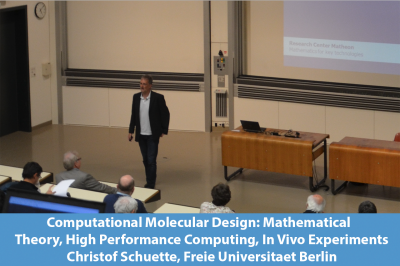
Computational Molecular Design: Mathematical Theory, High Performance Computing, In Vivo Experiments
Christof Schuette, Freie Universitaet Berlin
Can we go all the way from mathematics to commercial drugs via simulations? In this 2016 talk, the path is illustrated via the design process of a pain reliever, highlighting the benefits of an interdisciplinary and integrated approach, but also indicating potential pitfalls and obstacles along the way.
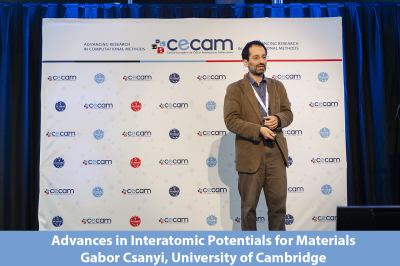
Advances in Interatomic Potentials for Materials
Gabor Csanyi, University of Cambridge
Plenary Lecture at “Molecular and materials simulation at the turn of the decade: Celebrating 50 years of CECAM” Lausanne Sept. 9-12 2019
How do we build accurate and efficient interatomic potentials? Here is a discussion of recent progress that combines use of highly accurate electronic structure data, nonparametric function fitting, sophisticated representation theory.
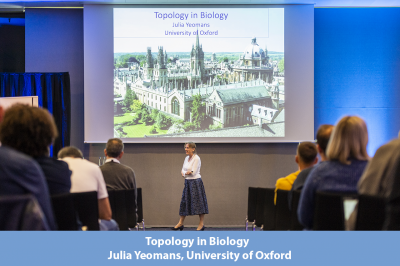
Topology in Biology?
Julia Yeomans, University of Oxford
Plenary Lecture at “Molecular and materials simulation at the turn of the decade: Celebrating 50 years of CECAM” Lausanne Sept. 9-12 2019
Discover the role that active topological results may have in regulating the turnover in epithelial cell layers and in contributing to controlling the structure of bacterial colonies.

 About
About